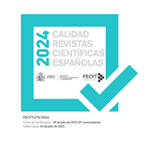Two at the time: The parallel learning of French and English as foreign languages
Resumen
In this paper, we report on the findings of a research project on the parallel learning of two foreign languages, French and English, by the same pupils in secondary education in Flanders (Belgium). The Flemish education system offers a unique context whereby the same learners acquire two foreign languages simultaneously in similar classroom environments. Not only does this reduce the number of intervening variables (e.g. memory capacity and age) substantially, it also offers an exclusive insight into the interaction between linguistic proficiency, curricular context and socio-psychological dispositions. Some 125 Dutch-speaking pupils, enrolled in the final year of secondary school, were selected from five schools in Flanders. Proficiency in both languages was measured by a cross-linguistically comparable test battery that evaluated productive skills (speaking and writing). In addition, the pupils’ attitudinal-motivational dispositions towards these languages were determined by means of a written questionnaire, consisting of some 100 statements that were based upon Gardner’s (1985) AMTB and Baker’s (1992) attitude instrument. In spite of their higher curricular exposure to French, the pupils consistently attained higher proficiency levels in English and were overall more favourably disposed towards English than towards French. Although several factors may contribute to this twofold-result, our study suggests that the extra-curricular exposure to a foreign language is a significant factor with regard to foreign language learning as it influences both the available learning opportunities and the socio-psychological dispositions towards the foreign language. In turn, the combination of additional extra-curricular input and more favourable socio-psychological dispositions somehow compensate for the discrepancy in formal exposure between French and English in Flemish foreign language classrooms.Descargas
Descarga artículo
Licencia
La revista Círculo de Lingüística Aplicada a la Comunicación, para fomentar el intercambio global del conocimiento, facilita el acceso sin restricciones a sus contenidos desde el momento de su publicación en la presente edición electrónica, y por eso es una revista de acceso abierto. Los originales publicados en esta revista son propiedad de la Universidad Complutense de Madrid y es obligatorio citar su procedencia en cualquier reproducción total o parcial. Todos los contenidos se distribuyen bajo una licencia de uso y distribución Creative Commons Reconocimiento 4.0 (CC BY 4.0). Esta circunstancia ha de hacerse constar expresamente de esta forma cuando sea necesario. Puede consultar la versión informativa y el texto legal de la licencia.











